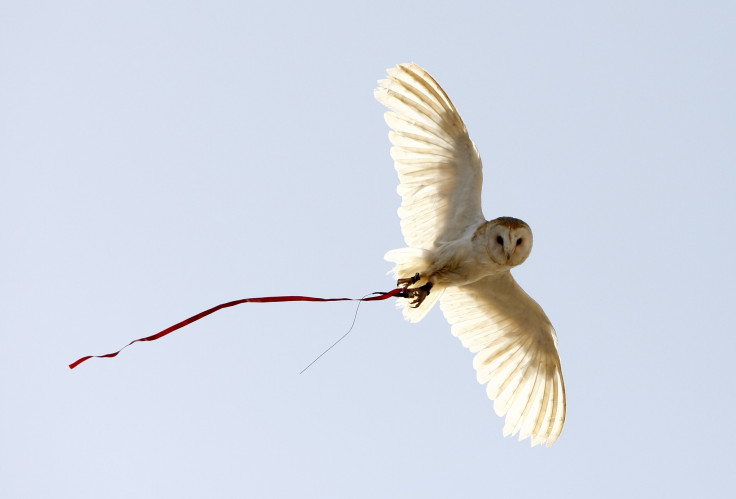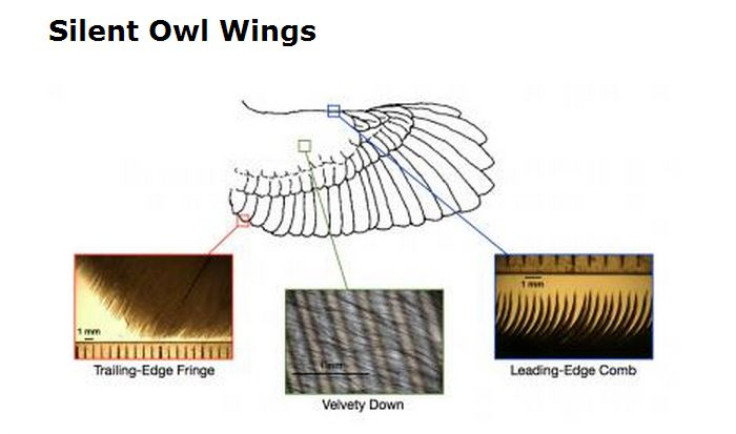The Inside Swoop: Owls’ Noiseless Wings Can Help Design Quieter Aircraft, Turbines And Other Human Inventions

Owls have specialized feathers that help eliminate the aerodynamic noise from their wings and allow them to silently sneak up on their prey, and engineers could effectively recreate this feature to help quieten down airplanes and other loud human inventions, according to scientists.
Researchers at Lehigh University in Bethlehem, Pa., who have been working to solve the mystery of how owls achieve soundless flying, believe that their findings will one day help bring “silent owl technology” to design not only aircraft, but also wind turbines and submarines.
“Owls possess no fewer than three distinct physical attributes that are thought to contribute to their silent flight capability: a comb of stiff feathers along the leading edge of the wing; a flexible fringe at the trailing edge of the wing; and a soft, downy material distributed on the top of the wing," Justin Jaworski, assistant professor in Lehigh University's Department of Mechanical Engineering and Mechanics, said in a statement.
Jaworski and his group are exploring whether the secret of an owl’s silent flight is based upon a single attribute or rely on a combination of attributes.

According to the researchers, the sound coming from the hard trailing edge in conventional wings dominates the acoustic signature in a bird’s flight. But, Jaworski and, Nigel Peake at the University of Cambridge, revealed in an earlier study that the porous quality of an owl-wing’s trailing edge helps reduce aerodynamic noise significantly.
“We also predicted that the dominant edge-noise source could be effectively eliminated with properly tuned porous or elastic edge properties, which implies that the noise signature from the wing can then be dictated by otherwise minor noise mechanisms such as the 'roughness' of the wing surface," Jaworski said.
The owl’s wing has a velvety down atop its wings, which, according to Jaworski, likely eliminates sound at its source through a mechanism that is significantly different than those used in ordinary sound absorbers. And, the scientists believe that the new study's results provide details about how a fuzzy -- compliant but rough -- surface can be designed to tailor the sound coming from it.
The researchers also carried out a study with the Virginia Polytechnic Institute and State University, which revealed a “forest-like” geometry of the downy part of the wing. According to them, these preliminary experiments show that a simple mesh covering, replicating the top layer of the “forest-like” structure, is expected to be effective in eliminating some sound generated by rough surfaces.
"If the noise-reduction mechanism of the owl down can be established, there may be far-reaching implications to the design of novel sound-absorbing liners, the use of flexible roughness to affect trailing-edge noise and vibrations for aircraft and wind turbines, and the mitigation of underwater noise from naval vessels," Jaworski said.
© Copyright IBTimes 2024. All rights reserved.












